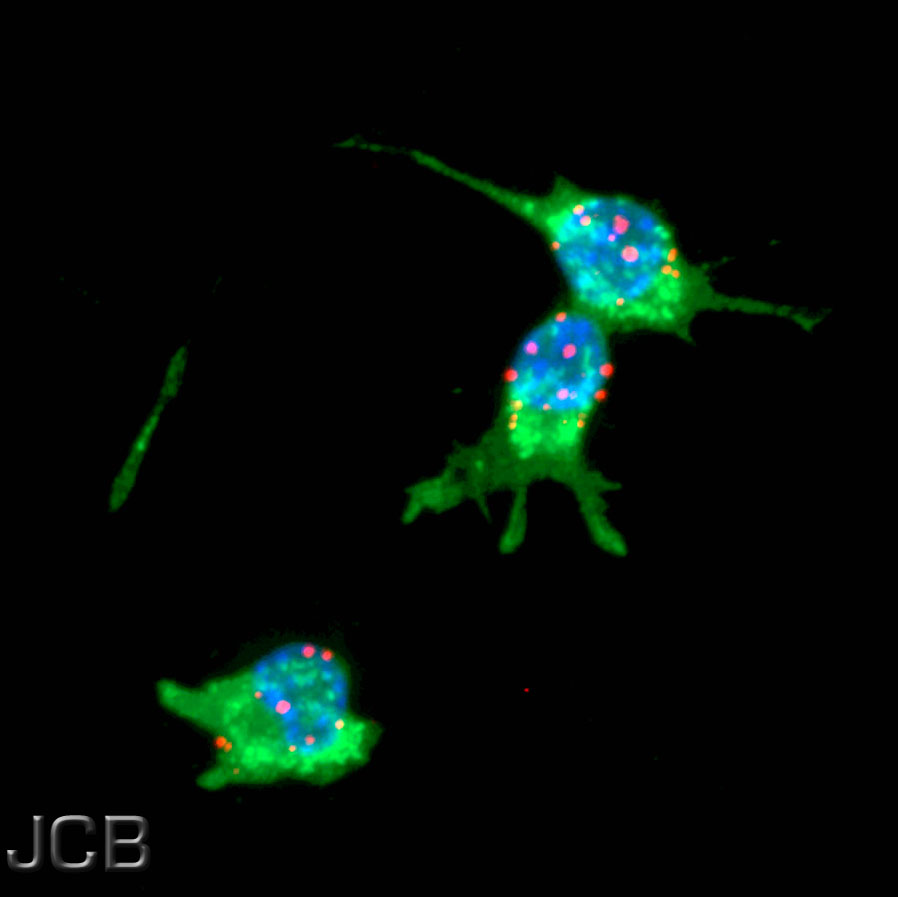Cancer detection has seen a revolutionary transformation, thanks to the emergence of a technique known as Protein Biomarker Analysis using Proximity Ligation Assays (PLA). This novel approach is a game changer in identifying cancer at its nascent stages, improving the chances of successful treatment and recovery. But what exactly is PLA, and how does it contribute to early cancer detection? Let’s delve into this promising frontier of medical technology.
Understanding Protein Biomarker Analysis
At its core, Protein Biomarker Analysis is about studying specific proteins – called biomarkers – that are often associated with the presence of cancer. Unlike the conventional methods which rely on identifying genetic mutations, this analysis focuses on proteins, offering a real-time glimpse into the presence of cancer.

This image is available to the public to copy, distribute, or display under a Creative Commons Attribution-Noncommercial-Share Alike 3.0 Unported license.
Reference: Pisconti et al. (2010) J. Cell Biol.190, 427-441.
Published on: August 9, 2010.
doi: 10.1083/jcb.201003081
Some of the innovative approaches and technologies in Protein Biomarker Analysis are:
- Multiplexed Proximity Ligation Assays: A high throughput protein biomarker discovery tool has been developed that utilizes multiplexed proximity ligation assays in a homogeneous format. This innovative platform comprises four 24-plex panels profiling 74 putative biomarkers with sub-picomolar sensitivity, each consuming only 1 μl of human plasma sample.
- TaqMan® Protein Assays: TaqMan® Protein Assays represent an adapted form of PLA technology, invented by Ulf Landegren, Simon Fredriksson, and colleagues. This technology melds antibody-protein binding with real-time PCR-based detection of the reporter nucleic acid sequence. It’s an illustrative example of how PLA technology can be adapted and expanded for varied applications in protein analysis.
- Multiplexed Protein Detection Procedure: A proximity ligation-based multiplexed protein detection procedure has been presented wherein several selected proteins can be detected via unique nucleic-acid identifiers. This method holds promise for a more comprehensive understanding and detection of protein complexes associated with cancer.
- Nanoparticle-Based Proximity Ligation Assay: This method enhances the traditional PLA by replacing antibody–DNA conjugates with nanoparticles. These nanoparticles create ultradetectable PCR templates by capturing biotinylated oligonucleotides and catalyzing ligation, thus potentially offering a more sensitive and quantitative assay for protein analysis.

Source: fishersci.se
The Role of Proximity Ligation Assays (PLA)
Proximity Ligation Assays are the tools that enable this intricate analysis. They help in measuring and visualizing protein complexes, which in turn, provide critical insights into the presence and progression of cancer. The beauty of PLA lies in its ability to offer real-time information, which is crucial for early detection and subsequent treatment of cancer.
Advantages Over Traditional Methods
- Early Detection: As mentioned earlier, one of the standout benefits of PLA is its potential for early cancer detection. By identifying protein biomarkers, it’s possible to spot cancer long before symptoms surface.
- Real-Time Analysis: Unlike genetic mutation tests that might not provide a current status of cancer, PLA offers real-time information, which is invaluable in determining the most effective treatment plan.
- Enhanced Accuracy: By honing in on specific protein complexes, PLA tends to have a higher degree of accuracy compared to traditional testing methods.
The Future of Cancer Detection
Integrating Proximity Ligation Assays in routine cancer screening could herald a new era in oncology. By enabling early and accurate detection, PLA empowers healthcare professionals and offers hope to individuals and families affected by cancer.
Concluding Thoughts
The journey towards a cancer-free world is laden with numerous challenges, yet with innovative technologies like Protein Biomarker Analysis via Proximity Ligation Assays, we are inching closer to that goal. As research advances, there’s an optimistic outlook that PLA will become a cornerstone in cancer diagnostics, offering a beacon of hope for millions affected by this dreaded disease.
This exploration into the world of Protein Biomarker Analysis is a testimony to the relentless human endeavor to combat cancer. It’s a significant stride towards not only understanding this complex disease better but also combating it with more precision and effectiveness.
Note: this content has been created using experimental Generative AI features.
While edited, authored, and reviewed by humans it may include some biased or incorrect statements.
